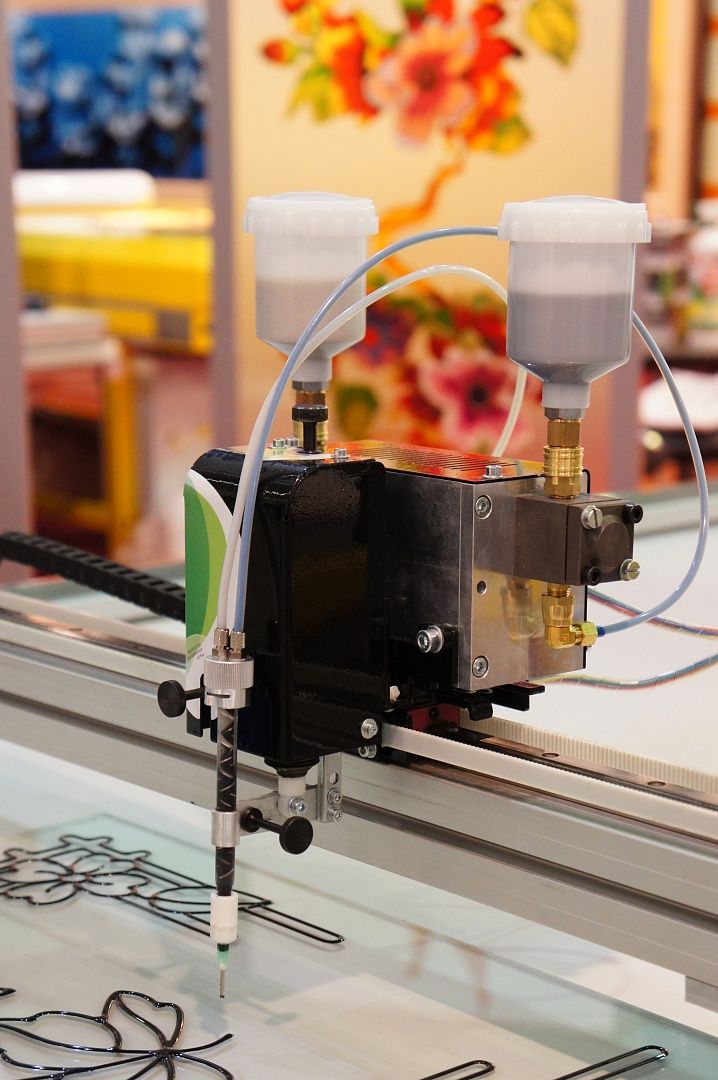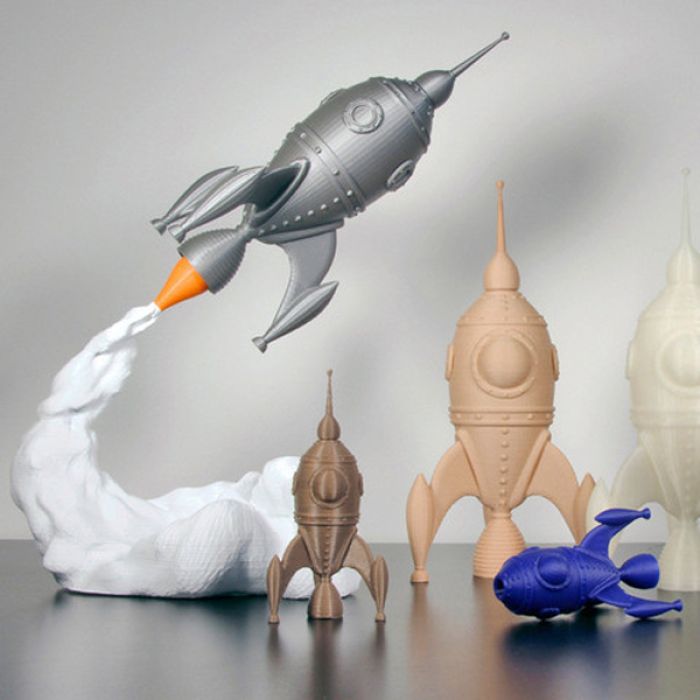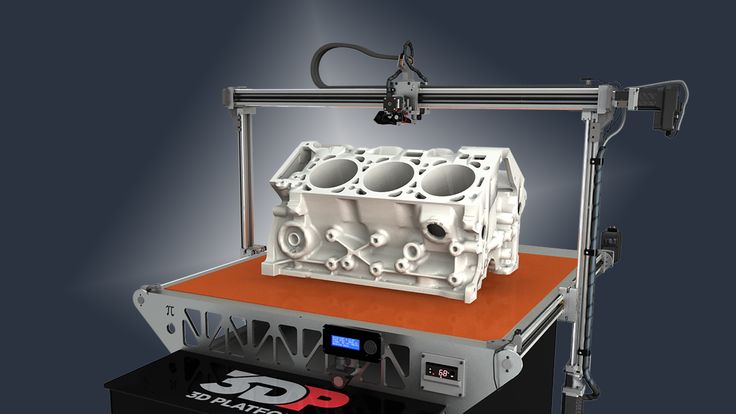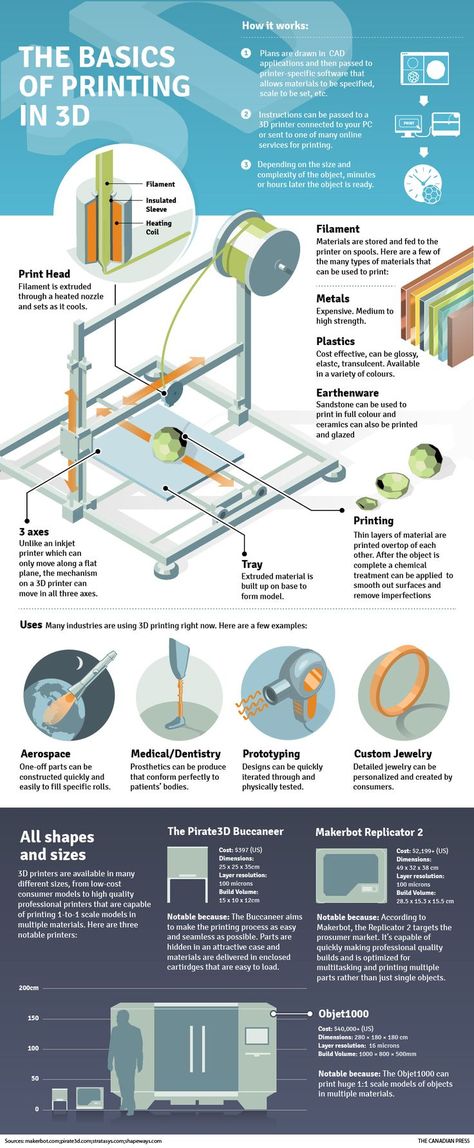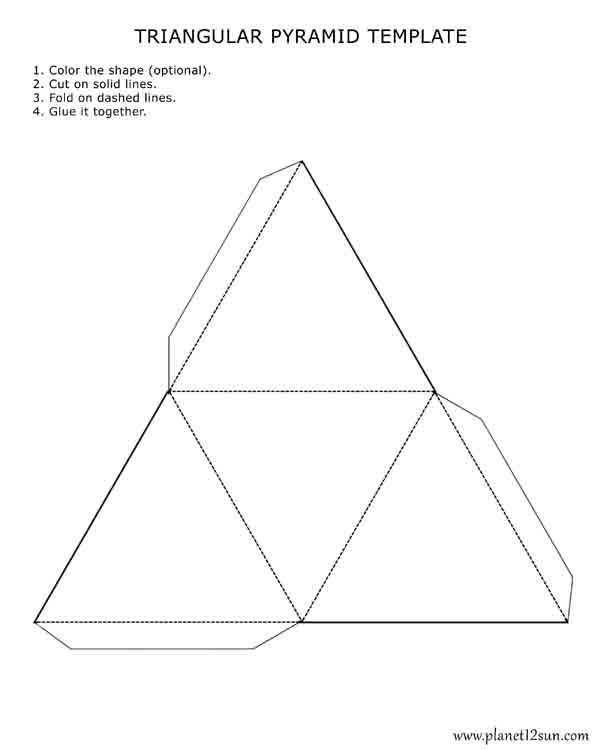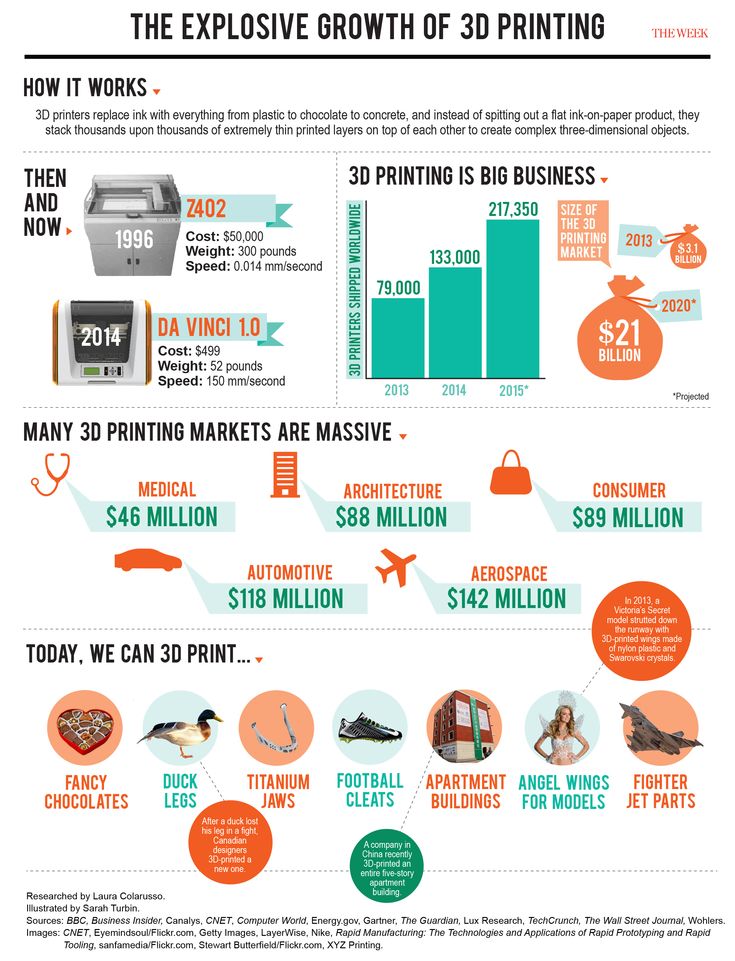3D scale scanner
Best 3D body scanners in 2022
3D body scanners are a modern and popular way to precisely acquire body measurements and features. Results can be used for rig animation, for fitness or healthcare follow-ups, and even in the fashion retail industry for virtual fitting rooms. This guide lists the best full-body scanners available this year. We also list a few affordable handheld 3D scanners that are suitable for body scanning.
Last update March 25, 2022
In our last update, we added a section to list a couple of color handheld 3D body scanning solutions from Scantech and Shining 3D.
Table of contents
What is a 3D body scanner?
Best 3D body scanners 2022: our selection
Proscanner
SS20 3D Body Scanner
Scanatic™ 360 Body Scanner
Portal MX
Portal BX
BOTSCAN NEO
iReal 2E
EinScan H
Fitness and personal health
Fashion and apparel: made-to-measure clothing
3D printed figurines and 3D photo
Healthcare
Closed 3D body scanning booth (or body scanning cabin)
Full body scanner with rotating platform or turntable
What is a 3D body scanner?
3D body scanners are designed to capture your full body in 3D. The result is a 3D model (also called 3D avatar) of your exact body shape with accurate data such as body measurements, posture analysis, textures, …
Originally developed for the fashion industry as fast and accurate 3D measurement solutions, 3D body scanners are now used in various other fields such as healthcare, 3D figurines and 3D photos, fitness, and entertainment.
We’ve selected some of the best body 3D scanners available and listed them here in this guide. Our selection focuses on full-body 3D scanning systems that are exclusively designed for 3D body scanning. We list a few handheld 3D scanner options further down the article.
A Texel 3D body scanner being used to attract customers to an event. Source: TexelBest 3D body scanners 2022: our selection
The table below recaps our selection of some of the best full-body 3D scanning options. The goal is to provide a quick, visual overview of the market; there are of course numerous other factors to take into account (software, customer service, …) to get the full picture for each solution and eventually make the right choice.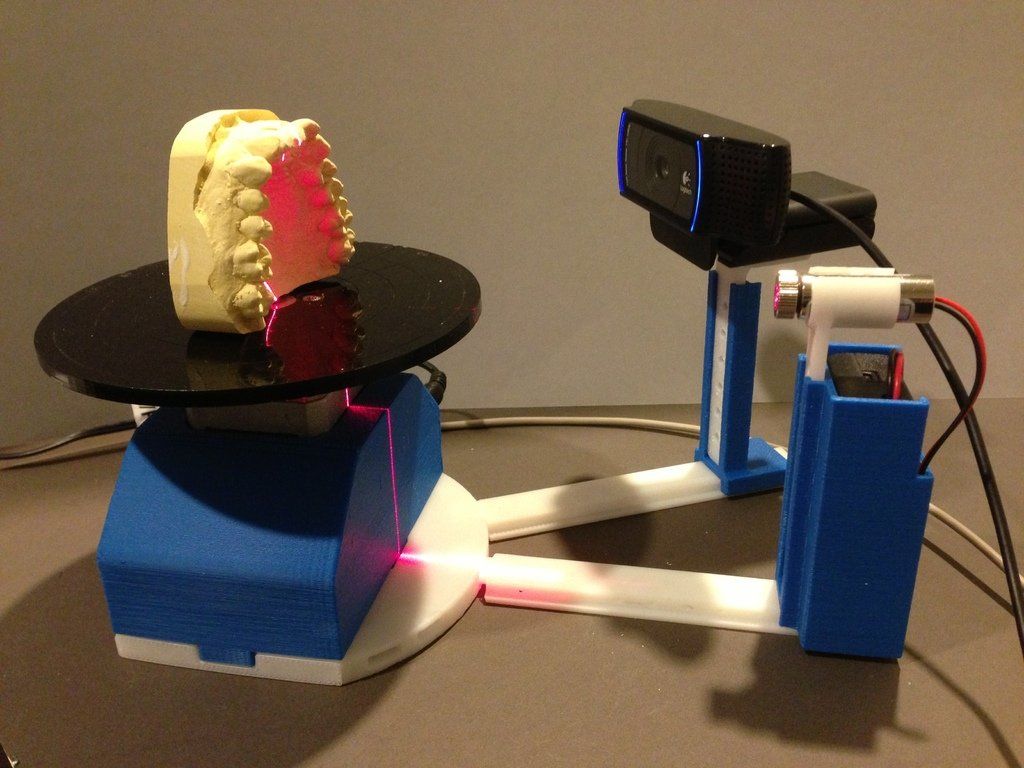
| Brand | Product | Country | Price Approximate starting prices based on supplier-provided information and public data. Prices may vary by region, over time and do not include additional products or services (taxes, shipping, accessories, training, installation, …). | |
|---|---|---|---|---|
| Fit3D | Proscanner | United States | $ 10,00010 000 €8,870 £1,490,560 ¥ | Quote |
| Size Stream | SS20 3D Body Scanner | United States | $ 15,00015 000 €13,306 £2,235,840 ¥ | Quote |
| TG3D Studio | Scanatic™ 360 Body Scanner | Taiwan | $ 15,00015 000 €13,306 £2,235,840 ¥ | Quote |
| Texel | Portal MX | United Kingdom | $ 34,90030 000 €30,958 £5,202,054 ¥ | Quote |
| Texel | Portal BX | United Kingdom | $ 45,65040 000 €40,493 £6,804,406 ¥ | Quote |
| botspot | BOTSCAN NEO | Germany | $ 200,000179 000 €177,408 £29,811,200 ¥ | Quote |
Expand to see more specs
The products in the table are ranked by price (low to high).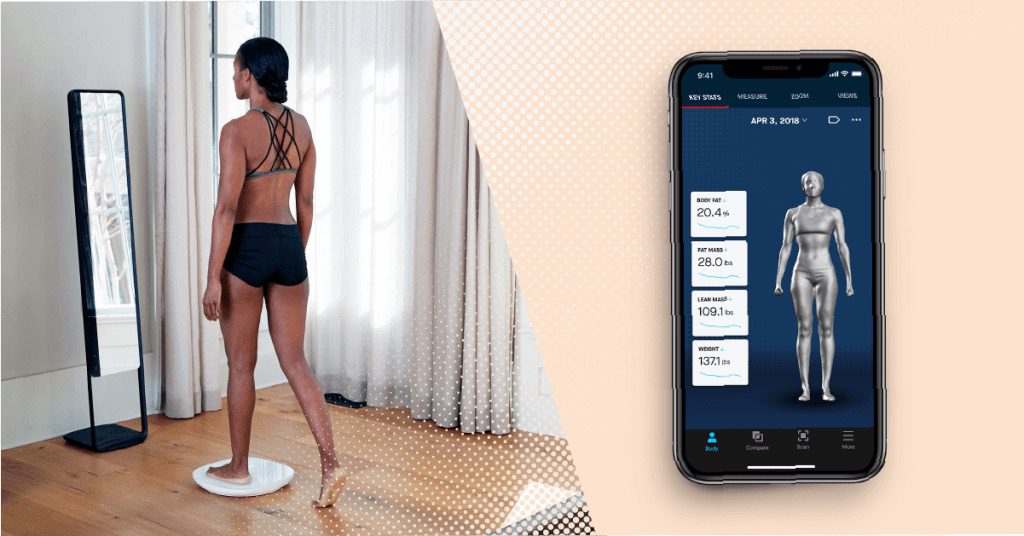
| Brand | Product | Technology | Max resolution | Country | Price Approximate starting prices based on supplier-provided information and public data. Prices may vary by region, over time and do not include additional products or services (taxes, shipping, accessories, training, installation, …). | |
|---|---|---|---|---|---|---|
| Fit3D | Proscanner | Structured light | – | United States | $ 10,00010 000 €8,870 £1,490,560 ¥ | Get a quote |
| Size Stream | SS20 3D Body Scanner | Photogrammetry | – | United States | $ 15,00015 000 €13,306 £2,235,840 ¥ | Get a quote |
| TG3D Studio | Scanatic™ 360 Body Scanner | Laser triangulation | – | Taiwan | $ 15,00015 000 €13,306 £2,235,840 ¥ | Get a quote |
| Texel | Portal MX | Structured light | 1 mm0.039 in | United Kingdom | $ 34,90030 000 €30,958 £5,202,054 ¥ | Get a quote |
| Texel | Portal BX | Structured light | 1 mm0. 039 in 039 in | United Kingdom | $ 45,65040 000 €40,493 £6,804,406 ¥ | Get a quote |
| botspot | BOTSCAN NEO | Photogrammetry | 0.1 mm0.003937 in | Germany | $ 200,000179 000 €177,408 £29,811,200 ¥ | Get a quote |
Overview of the best full body 3D scanners
In this section, we give some more context and information about each 3D scanner from our selection.
The Fit3D Proscanner is a 3D body scanner for fitness and healthcare applications. It’s designed to provide a comprehensive wellness assessment based on a detailed 3D body capture.
This body scanning system is mainly used in gyms, health clubs, and fitness studios. The Fit3D Proscanner is able to accurately 3D scan a person in 40 seconds and to provide a posture analysis as well as a body shape wellness score.
Contact manufacturer Get a quote Add to comparison
The Size Stream SS20 3D body scanner is a versatile full body measurement system, designed to capture thousands of data points to create a 3D model of a person’s body. This 3D body scanning booth is primarily designed for 3D measurement to create custom clothing.
This 3D body scanning booth is primarily designed for 3D measurement to create custom clothing.
The Size Stream body scanner can also be used for 3D printing, measurement tracking, size surveys, and healthcare and fitness applications.
Contact manufacturer Get a quote Add to comparison
The Scanatic 360 Body Scanner by TG3D is designed for the fashion industry. It is lightweight and easy to move, and can be fully integrated within a fitting room. Scans take 3 seconds, and measurement points are available in 30 seconds.
TG3D develops software and applications that are tailored for the clothing industry.
Contact manufacturer Get a quote Add to comparison
The Texel MX can be used for the entertainment and advertising industry, for medical applications, and even as a digital fitting room.
It takes the Texel MX 30 seconds to perform a full 3D body scan, and just 60 seconds to create a digital 3D model with automatic rigging. As with the BX version, results can be directly used for 3D printing or 3D animation./cdn.vox-cdn.com/uploads/chorus_asset/file/12803133/IMG_4902.1419979924.jpg)
Contact manufacturer Get a quote Add to comparison
Texel (or Texel Graphics) is one of the leading manufacturers of 3D body scanners. Their solutions are suitable for a wide range of applications and can be customized for specific events, stores, or environments.
The BX is able to scan up to 40 people per hour and comes with a registration tablet for users to input their names and email address. 3D avatars are directly sent to their inbox and can be shared via social media.
Contact manufacturer Get a quote Add to comparison
The botscan NEO by German manufacturer botspot features a modular design and is customizable. This system uses a combination of structured light and photogrammetry to provide accurate and colored meshes.
For an easy user experience, the NEO comes with an intuitive mobile app. Its maximum scanning volume capacity is 1000 x 1000 x 2000mm.
Contact manufacturer Get a quote Add to comparison
Handheld 3D body scanning options
Some handheld color 3D scanners are suitable for 3D scanning faces, hands, arms, … They can also perform full-body scans, though the process takes a while and requires the customer or patient to stay still during that time.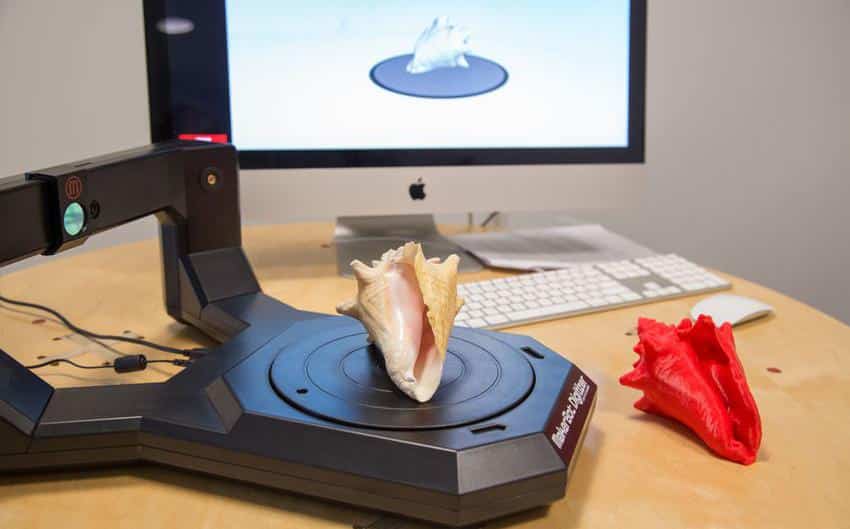 The portable color 3D scanners listed below can therefore be good options to scan specific body parts (e.g. head and chest for 3D avatars, an arm or leg for prosthetics) or for infrequent full-body scans.
The portable color 3D scanners listed below can therefore be good options to scan specific body parts (e.g. head and chest for 3D avatars, an arm or leg for prosthetics) or for infrequent full-body scans.
The iReal 2E is a versatile 3D scanning option in the entry-level price range. It uses VCEL structured light to capture medium- to large-sized objects. Like infrared light, VCEL light is invisible to the human eye and is therefore also particularly adapted to face and body 3D scanning.
Scantech has reported diverse use cases for the iReal 2E 3D scanner, namely in forensic investigations, healthcare, and even culture preservation. In the latter, Scantech’s customer 3D scanned a woman performing different Tai Chi movements– an interesting and uncommon application!
Contact manufacturer Get a quote Add to comparison
The EinScan H was launched alongside the EinScan HX in September 2020. It uses a combination of structured LED light and infrared light, with a built-in color camera for texture acquisition.
This 3D scanner can therefore serve a range of applications involving color capture, with uses in retail, art preservation, healthcare, and more. Furthermore, its infrared light is eye-safe and won’t blind users during a face or body scan.
Shining 3D’s versatile EinScan H is a great entry-level deal for most basic use cases, and its software is getting more intuitive by the update.
Contact manufacturer Get a quote Add to comparison
3D body scanning applications
Fitness and personal health
Fitness body scanners
Body scanners can be used in fitness clubs, gyms, and healthcare facilities. Fitness body scanners allow you to track the evolution of a person’s body through various 3D measurements such as body shape and posture.
Visualizing these evolutions on a 3D avatar is a strong motivational boost that can help increase gym members’ engagement and improve patient recovery processes.
Home body scanners
These 3D body scanners are consumer appliances made to monitor personal health and body shape as well as posture evolution, among other data points. Homebody scanners usually have a 360° rotating platform on which the user stands.
These 3D body scanners typically work with a smartphone app acting as a personal trainer, so users can easily track all their data and reach their fitness goals.
Fashion and apparel: made-to-measure clothing
The fashion and apparel industry was among the first to embrace 3D body scanning for several applications:
- Fast and accurate 3D measurements
- Made-to-measure clothing (custom clothing)
- Highly personalized recommendations
- Measurement surveys and anthropometric characterization
- Virtual fitting rooms
Users can obtain their own 3D avatar on their smartphone and use it to see how clothes fit without physically trying them on.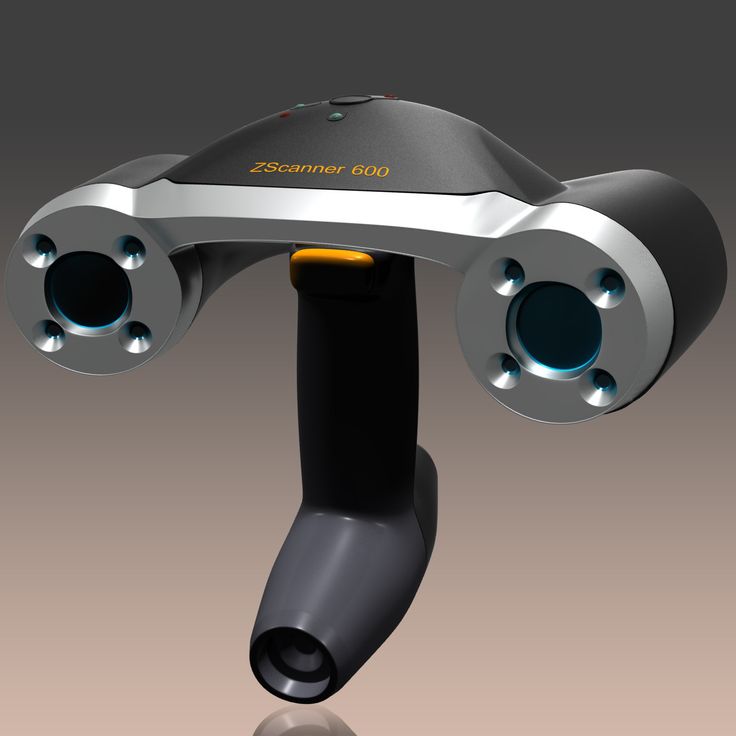
This is as useful for luxury, tailored clothing as it is for retail and e-commerce.
3D printed figurines and 3D photo
Also known as 3D selfies or 3D portraits, these miniature figurines of people are typically 3D printed from a 3D body scan. If you want to learn more about this application, you can visit our article dedicated to 3D printed figurines.
Here are a few 3D body scanner options that are designed for 3D figurines:
- Artec Shapify Booth
- Doob Dooblicator
- KODAK Full Body 3D Scanner
- Picanova 3D.me
- Pics3D Cobra
- Scanologics ScanLounge v2.5
- Twindom Twinstant Mobile
Healthcare
Healthcare and medical sectors are filled with opportunities for 3D body scanning. From monitoring body shape and posture during pregnancy to making custom 3D printed prosthetics and more, body scanners are increasingly used for use in the medical field.
Body scanning can also be used to accurately monitor skin recovery in the case of burns or to detect skin diseases at an early stage, thanks to specific 3D imaging systems.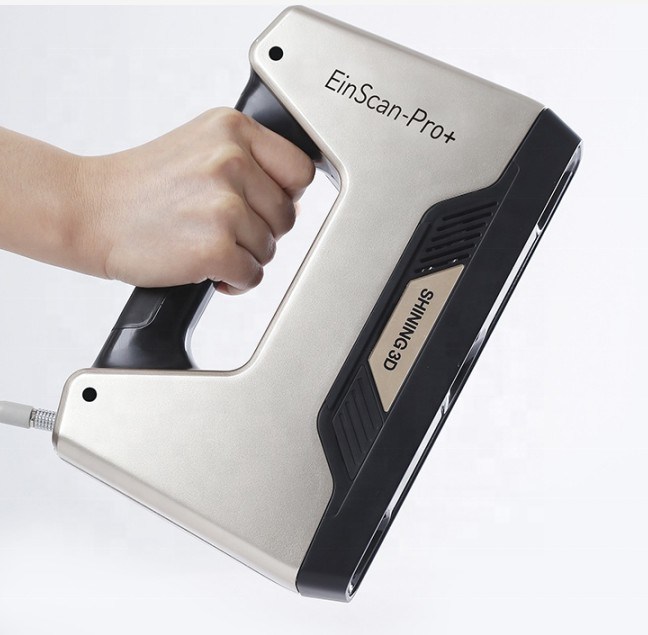
How do 3D body scanners work?
To obtain a full body scan, the person holds a pose for a few seconds, which is the time it takes for the 3D scanner to capture images from all angles. The 3D software then reconstructs the final 3D model of the body by “stitching” all of the images together, generating a highly detailed 3D model. Models can have colors and textures depending on the type of body scanner that’s used.
During the 3D capture process, the subject can either stand on a rotating turntable facing a fixed 3D body scanner, or stand still while the sensors located all around the body scanning booth capture images from all angles.
Closed 3D body scanning booth (or body scanning cabin)
A body scanning booth is a closed cabin that is rigged with cameras or 3D scanners. These full-body 3D scanners look a bit like regular fitting rooms.
Full body scanner with rotating platform or turntable
To use these body scanners, the person stands on a rotating table facing a 3D body scanner, typically a vertical unit. During the scanning process, the turntable rotates 360°, allowing the subject to be captured from all angles. The 3D model is generated once the full rotation is complete.
During the scanning process, the turntable rotates 360°, allowing the subject to be captured from all angles. The 3D model is generated once the full rotation is complete.
A 3D Body Scanner Comparison
Individuals weigh themselves after a week of working out only to see the same old number staring up at them. Traditional scales don't tell individuals the whole story. This can lead to discouragement.
Looking in the mirror to track fitness progress isn't reliable. To see fitness progress in a mirror is misleading because it relies on memory. And photos only capture specific angles and lighting.
Often, individuals make fitness improvements but their scale doesn't reflect that. So people are without the positive feedback they need to stay motivated. 3D body scanners are the new fitness tech that will change the game forever.
When weighing up the Styku vs. Shapescale, which 3D body scanner is superior? We explain the pros and cons of each in this comparative guide.
Shapescale
These days, it's easy for people to make excuses as to why they overeat or skip workouts here and there. But with Shapescale, they see the data clearly, and they can't argue with it. It'll completely change the way fitness goals are achieved.
Shapescale is a revolutionary new scale that scans an individual's body. It does this from every angle in 3D. They can step onto the Shapescale and its mechanical arm rotates around 360 degrees.
It takes less than a minute and captures hundreds of pictures with an infrared camera.
Who Is It Geared Toward?
The 3D, photorealistic image is then uploaded to the Shapescale app. This allows them to track their fitness. They update the image and metrics by stepping onto the scale again.
This is just one reason why fitness centers and fitness fanatics alike can enjoy this. There are many selling points businesses can choose from to help educate customers.
Users will clearly see fat loss and muscle gains as they rotate the 3D model of their body. They can do this right on their smartphone. With high precision and accuracy, Shapescale transfers data from the real world right into the palm of their hand. This allows them to analyze the photorealistic model of their body.
They can do this right on their smartphone. With high precision and accuracy, Shapescale transfers data from the real world right into the palm of their hand. This allows them to analyze the photorealistic model of their body.
Individuals can see themselves from every angle and use the "Heatmaps" feature. This helps them see exactly where they've been losing and gaining.
They'll see whether the change involved fat or muscle*. No more annoying, cumbersome, and painful fat calipers or tape measures.
*Please note that it doesn't measure visceral fat (the fat around internal organs). With Shapescale, any loss is "associated" with fat loss. Any sculpted gain is "associated" with muscle gain. This is still better than human eye detection of fat and muscle changes.
It doesn't use underwater weighing, bioelectric impedance, or DEXA scans. Nor does it use ultrasound, x-rays, or skinfold calipers. These are tools and procedures individuals can use to supplement Shapescale's data.
This can be useful if people want to add to their personal fitness record-keeping and metrics.
Why Is It Effective?
Individuals can now scan themselves every day (or at any time interval) in order to see what has changed between two specific dates. This functionality allows them to optimize their fitness routines and nutrition plans more effectively. These changes are presented in "Difference View" on the Shapescale app for easy data access.
Accurate, data-driven feedback is essential to eliminating excuses. It keeps people on the right track. They'll be less likely to skip workouts or feast on ice cream. They'll see the body changes right there in the app.
Localized data such as fat and muscle mass percentages are represented. This includes each section of the individual's body. The Shapescale app allows everyday people to set their fitness goals in advance, so they can stay focused and motivated to achieve them.
This incredible new technology detects body changes that human eyes can't see, so fitness fanatics and patients alike get that valuable feedback from the AI -- even when they don't see changes in the mirror.
Body Shape Index
In the general population, Body Mass Index (BMI) indicates the percent body fat and several disease states. BMI is not perfect at predicting percent body fat in heavily muscular individuals such as athletes and bodybuilders.
Since BMI is limited, the Shapescale offers a slightly different measurement, that being the Body Shape Index (ABSI), which was developed by health experts to address the shortcomings of BMI.
ABSI includes body circumference and height, as well as the BMI of an individual, and studies show it more accurately predicts obesity, some diseases, and even mortality.
Recently, Body Volume Indicators (BVI) entered the scene, but sadly, these apps were only made available to medical professionals, and for now, are still restricted.
The BVI Pro App is more thorough than BMI indicators. But, let's face it -- going to a doctor, exercise physiologist, or dietician to check their BVI isn't practical or affordable, especially when someone wants to check their progress daily or weekly.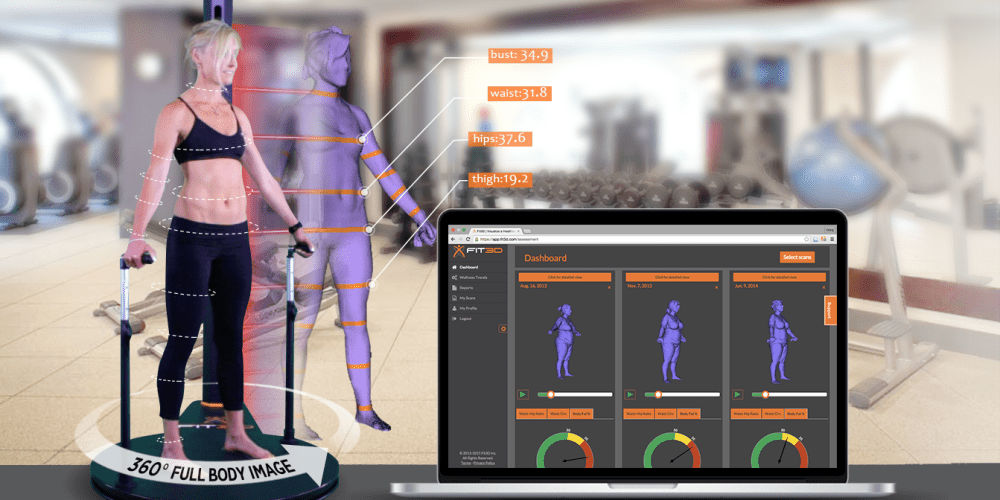
Shapescale has improved the world of health by bringing that ABSI and BVI technology to the general public. Shapescale can bring this opportunity right into homes, all types of fitness centers, and anywhere people like to workout.
Skyku
The Skyku S100 is essentially the same as the Shapescale, however, instead of an arm rotating around the individual, the machine rotates the individual on a platform. The Skyku is also the fastest scanner on the market, taking only 35 seconds. This still allows the stationary camera to take hundreds of pictures from every angle.
It's non-invasive, intuitive, lightweight, and portable. The Skyku body scanner is interactive and illustrates to the individual their body shape and any gains and losses just like the Shapescale.
Set and track fitness goals by entering desired burn rate, activity level, and weight loss. Users just log in, from anywhere in the world, and manage their accounts, view data analytics, and set preferences.
Who Is It Geared Toward?
The Skyku Body Scanner is more geared toward the medical field but works just as well as the Shapescale for everyday fitness needs. It has a dropdown menu where people can choose which metric or area they'd like to analyze.
Interactive graphs show metrics changes can also be seen within the 3D model graphic area, allowing the mind to more accurately understand the feedback.
Skyku is a better tool with which to see contours, before and after photos, etc, so it's ideal for plastic surgeons, aesthetic professionals, and dermatologists. Physical therapists, chiropractors, and functional trainers can keep track of patients' muscle gains, and posture.
Medical doctors can use this new, intelligent tool to measure waist circumference, body fat, and waist-to-hip ratio in order to help assess the track the risk of obesity-related diseases and more.
Why Is It Effective?
It provides a digital tool to examine for musculoskeletal risks. It will show exact bone density/mass and even posture by using its state-of-the-art 3D camera. Customer experiences are enhanced by this streamlined process.
It will show exact bone density/mass and even posture by using its state-of-the-art 3D camera. Customer experiences are enhanced by this streamlined process.
Fitness centers can use this just like the Shapescale and can choose one depending on how customers react to each experience. Skyku leverages body measurements and precisely calculates body fat percentage. Fitness pros can set goals, highlight changes, etc. using the 3D model.
Bariatric surgeons and weight-loss professionals can assess the health of patients and their health risks.
3D Body Scanner Studies
Skyku has dedicated themselves to working with only the best and brightest, most accurate safety analyzers, and fitness experts to bring you safety testing and research.
If you're interested in conducting a Skyku study yourself, just set up a meeting with one of our team members and we'll help you get access to a body scanner to fulfill your research needs. We're open to working with anyone with a genuine interest in fitness and educating the public on their benefits and any data associated with Skyku.
Studies indicate that 3D body scanners are precise and provide stable measurements of body composition and shape. As software is updated, certain biases will be resolved, such as detecting slight differences between landmark locations on the body.
For now, the results are incredible and show how amazingly informative and safe our fitness body scanning technology is today. Even more detailed correlations between body composition, shape, and metabolic health factors will be discovered in future studies. These factors include age, sex, BMI, ethnicity groups, any metabolic disorders.
North Dakota University found that Skyku 3D Whole Body Scanner has "nearly perfect reliability". They looked at the data analysis and compared it to the combination of other clinical types of fitness data gathering procedures.
3D Fitness Scanners Will Shape The Future
So, which will it be -- Shapescale or Styku? Look at the goals they help achieve and how.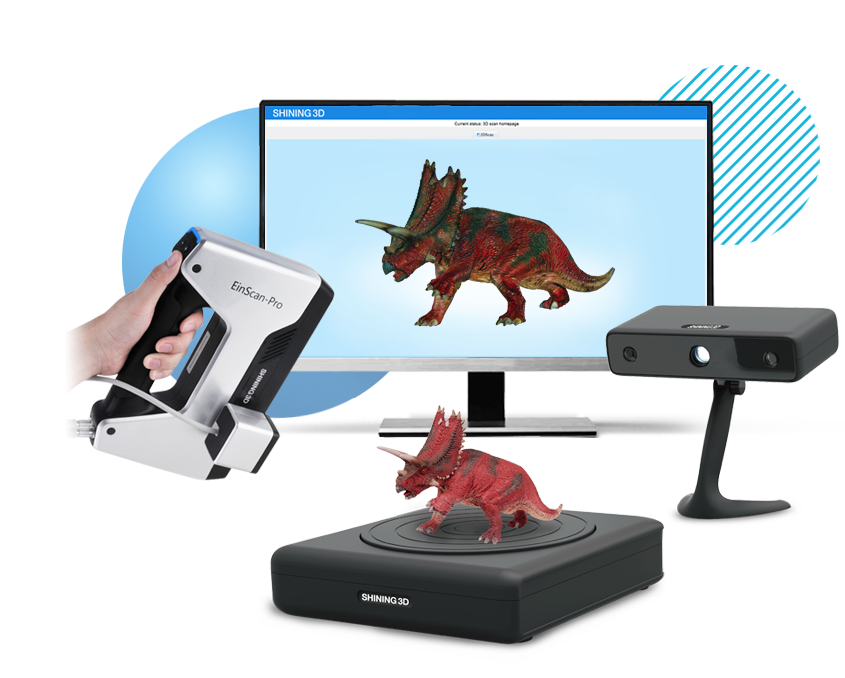 Consider "all angles" when assessing the options. Know that either one you choose will upgrade any fitness center or health-related facility to the next level.
Consider "all angles" when assessing the options. Know that either one you choose will upgrade any fitness center or health-related facility to the next level.
Stay up-to-date with the new 3D scanning fitness and health technology. In this world of quickly-changing assessment tools, we'll be better equipped with 3D fitness body scanners. These keep people informed of their health progress without visiting doctor.
Contact us to learn more about how 3D body scanners such as Shapescale and Skyku can help you or your business!
we choose the best in 2022 in our direction
In order to expand the user audience, SHINING3D offers universal solutions - the same 3D scanner is able to satisfy the needs of ordinary consumers and large businesses and be in demand in the conditions of industrial production of products. Based on the feedback, comments and reviews of device owners, taking into account their needs, the developers have improved the line of models, making 3D digitization and additive technologies even more accessible.
Content:
EinScan Series 3D Scanners
For Beginners, Designers or Education
th The application of scanning relatively small objects requires precision and advanced settings in the snapshot processing program. The first thing users are guided by is the scanning area. With the help of two models - EinScan-SP and EinScan-SE - it will be possible to scan an object from 30 × 30 mm. Very important for the buyer and their price, as well as mobility and ease of movement.
EinScan-SP and EinScan-SE are useful for beginners, designers and educational users. Desktop scanners SE and SP are the easiest to learn.
Key benefits:
- Easy device setup with Plug and Play technology;
- Russian software interface;
- the ability to scan objects of different sizes - from small to large;
- texture tracking.
- one scan time - 4-8 seconds;
- Russified software;
- automatic and fixed operation;
- Align scanned data with marks.
- 8 seconds per scan;
- time required for 360 degree scanning in Auto Scan mode - 2 minutes;
- Russified software;
- automatic alignment of multiple scans;
- API access service for 3D printers of any brand.
Scanners for objects of different sizes
Due to their large dimensions, some parts need to be scanned from a distance of several meters - in this case, portable devices are used. In this category, models with the “H” index successfully demonstrated their capabilities: EinScan H , EinScan HX from the line of mobile hybrid devices. If you choose by price, the most affordable is the portable EinScan H.
Two of these models stand out from the list of products that SHINING3D produces by the presence of hybrid light sources:
- EinScan H - an invisible infrared emitter spectrum has been added to the LED backlight;
- EinScan HX - white LED light combined with a blue laser.
This high-tech solution makes it possible to use these two professional scanners. Manual mode allows you to scan objects of different sizes - medium and large.
To improve the accuracy of the photographs, glossy surfaces are treated with a matting spray. But with the help of some devices, the digitization of such objects is performed without preliminary application of auxiliary compositions to their surface, which saves a little time.
- Structured radiation from an LED source and a scanner laser projecting crossed laser beams onto the surface.
- In Laser Scan mode, object scan accuracy is 0.04 mm.
- Minimum distance to point is 0.05 mm in laser mode.
- High efficiency in fast scan mode - 1,200,000 points/s.
- Full color reproduction of the part.
Copying accuracy is so great that when scanning objects of works of art, it is possible to obtain an almost perfect replica. For medical institutions, this is also a worthy find. Separately, it should be noted the presence of a built-in color camera.
There is a free download of PC software with many functions for setting up and calibrating the equipment. The installation package is also supplied on a USB stick if you need a stand-alone installation in the absence of Internet access. Even an operator without experience and knowledge can work with the intuitive interface of the program, which saves time on staff training.
3D scanning of people and their faces
If living objects are selected for work, a special scanning technology is required. You can get a digital copy of a fragment of a human body, face and hair using EinScan H hybrid models - thanks to two light sources and a color camera, they produce an ideal 3D model with texture preservation. A special requirement for the model: it must not move.
- Two scanning technologies - LED and infrared light, invisible to the human eye, combined in one device.
- Scanning people (portrait, full-length) and other living objects.
- High accuracy of scanned data up to 0.05 mm and volumetric accuracy of 0.1 mm/m.
- Resolution up to 0.25 mm.
- Fast scanning and large scanning FOV 420 × 440 mm.
According to experts who have been conducting research in the world of additive technologies for many years, specific criteria are set for certain tasks: the more complex the part geometry, the higher the scanner resolution should be. But it will also take more time to digitize, and the file size will increase due to the multiplication of the number of cloud points with a smaller distance between them.
Of the three samples, the HX version is the universal laser scanner model, and the Einscan Pro HD/Einscan Pro 2x 2020 are multifunctional scanners that have the ability to perform tasks in various industries.
The EinScan Pro HD is an upgrade from the older model of the Einscan Pro 2x series, thanks to its ergonomic and high quality design. Models in this range can be used with a special tripod.
This professional 3D scanner provides high precision scanning of objects in both operating modes: up to 0.045+0.3 mm/m.p. in manual mode and up to 0.04 mm. in fixed scan mode.
Manual object scanning has two submodes: Rapid and HD, the latter providing a higher level of detail (resolution). Depending on the complexity of the geometry of the object, the presence of deep holes, and the parameters of the 3D scanner, such as resolution (distance between points), the final image may require further processing in the program.
The maximum possible scanning speed for this scanner is 3 million points per second. Even if we ignore the specifications, we can see that this device is extremely fast in real-life scenarios. For example, a 220 x 71 cm low-relief sculpture takes less than one minute to digitize in color.
Scanning of human bodies is also possible with this device, it provides decent quality. Last but not least, using a 3D color scanning camera with the device allows you to get scans with color and texture and realize even more projects. To keep the best price and reduce costs, manufacturers offer such cameras as an additional Color Pack option, which is paid only by those consumers who work with texture models and who really need it.
EinScan HX is more expensive than the EinScan H scanner, and functional professional scanners, which include the EinScan Pro HD, are traditionally more expensive than other classmates and therefore are available to large manufacturers in the field of additive technologies.
EinScan Pro 2X 3D Scanner 2020
This portable and versatile handheld 3D scanner helps you get highly accurate results.
The EinScan Pro 2X 2020 3D Scanner is an excellent option for scanning small, medium and large objects.
3D scanner EinScan Pro 2X 2020The updated scanner model has improved the main characteristics, added new 3D scanning algorithms. Thus, Einscan Pro 2x 2020 has become a more affordable version of Einscan Pro HD, retaining the advantages and features of the old model.
The main improvements of the new model:
- A new principle of 3D scanning of the device in manual HD mode, which allows scanning without the use of markers (as Einscan Pro HD does). The old model could not scan without markers in this mode. The quality and detail of scans have also been improved.
- Higher device scanning accuracy in manual HD mode, improved volumetric accuracy for scanning large objects.
- Higher scanning speed in manual HD mode.
- Increased 3D scan area.
- Added alignment modes in manual HD mode: alignment by markers, by geometry, hybrid alignment. This expands scanning capabilities and efficiency in a wider range of tasks and areas.
Einscan Pro 2x 2020 3D Scanner is compact and lightweight, you can take it with you anywhere. It has a comfortable handle and is light (namely 1.13 kg) and easy to hold in your hand, and if you need HD mode accuracy, put the scanner on a tripod. The scanner is connected via USB 3.0 to a computer or laptop.
According to experts, the latest developments in the field of data capture and optimized algorithms make the 3D scanner Einscan Pro 2x 2020 a truly breakthrough - its scanning speed reaches 1,500,000 points per second (at 30 frames per second) in manual scanning mode.
If you need to expand the functionality of the scanner, Shining 3D offers several optional options:
- Color Pack 3D Scanner is an optional camera that allows you to scan with color and texture.
- Industrial Pack - accessories such as turntable and tripod. Suitable for high quality scanning of small objects in the studio.
Transcan C
3D ScannerThe Transcan C 3D Scanner is a professional grade scanning 3D scanner capable of capturing “superiorly” accurate high-resolution scans of small to medium objects thanks to two 12 megapixel color cameras with adjustable scanning range and the ability to switch between multiple permission levels within a single project.
The 3D scanner has a sliding design that allows you to easily switch the scanning range between 150 x 96 mm and 300 x 190 mm when working with objects of different sizes. The multi-resolution fusion algorithm makes it possible to mix high, medium and low resolutions in one project, which makes the scanner much more efficient, and its two cameras can capture a 24-bit color map to capture detailed 3D color data and provide better results.
The Transcan C has a structured light scanning mode with an automatic turntable that, in combination with the scanning software's stitching algorithm, allows efficient 3D model acquisition without manual intervention.
What other indicators you need to look at to choose what you need
The technical characteristics of the devices determine their use in a particular area: in jewelry, high detail is required, in industry - accuracy, in art - the possibility of color digitization, in the field of education - ease of setup and others. Of course, the properties are considered in a complex: the most important parameter is considered as a basic one, the rest are considered as auxiliary, but at the same time mandatory.
3D Scan Accuracy
The degree to which the copy matches the original is perhaps the most important indicator. The technical characteristics of scanners indicate the maximum allowable deviation of the scan size from the real object. The indicator is measured in millimeters or microns (1 micron = 0.001 mm). The smaller the number, the more accurate the 3D scan will be. But the deviation in reality can be larger, since it is quite difficult to create ideal conditions for the device to work, the result is affected by:
- characteristics of the object;
- user qualification;
- scanner settings.
It is important to understand that accuracy and resolution are different characteristics of scanning equipment. Detail is the smallest distance between points, the limitation of which is due to the resolution of the cameras and the principle of the scanner.
Ability to digitize in motion
Triangulation 3D scanners will help to scan moving objects, which can lead to an increased cost of devices of this type. This technology is not usually found in handheld 3D scanners, but among the offerings of the company with a rich history of SHINING 3D is the 2020 model EinScan HX, which at that time implemented triangulation technology.
The use of professional 3D scanners in metrology
3D scanners cope with the processes of measuring sizes and shapes of models in a matter of minutes, unlike traditional coordinate measuring machines, in which coordinates are read by contact sensors. The non-contact mode of operation enables the device to scan and measure surfaces of complex shapes (internal corners and edges), recesses and other hard-to-reach places.
After receiving all the necessary data during the processing of the object, they are transferred to the computer for processing. The program performs a comparison of indicators in order to identify deviations - a mismatch in shape and size, the presence of chips, cracks and other deformations caused by mechanical stress or corrosion processes.
Innovatively adapted blue laser 3D scanning technologyOptimScan-5M, 3M and AutoScan Inspec "scanner-inspector" are designed for metrology purposes for scanning a small object. All these devices, to some extent, belong to the same price niche, are multitasking, provide an opportunity to obtain high-quality digital 3D models for comparison with reference samples, demonstrating:
- the highest scanning accuracy;
- the ability to upload scans to processing programs;
- compatible with CAD/CAM technologies;
- work with objects of various sizes and shapes, including those with complex geometry;
- texture tracking and color imaging.
Professional, they are also industrial, 3D scanners help to perform a wide range of tasks:
- reverse engineering;
- ultra-precise 3D quality control;
- implementation of intermediate stages of the technological chain of creating products using additive technology;
- faster prototyping and other operations.
On the Russian market, you can find interesting offers for the purchase of scanning devices for photogrammetry at a fairly reasonable price. However, you should pay attention to their characteristics, especially such as the resolution of cameras, the distance between points, and some others that are important for measuring instruments, since the accuracy of the results depends on them.
3D scanning in mechanical engineering
Integration of 3D scanning technologies into production processes provides undoubted preferences. Properties of modern industrial scanners:
- high speed;
- ultra-precise measurement and digital copy saving;
- processing of objects regardless of the size and complexity of the form;
- possibility of implementation in automated process control systems.
With the help of 3D scanners and specialized software, numerous processes can be performed:
- reverse engineering, or reverse engineering;
- metrological control;
- test measurements of geometric parameters for the purpose of quality control and detection of defects;
- creation of archives of digital models.
Reverse engineering
Reverse engineering of complex shapes is one of the areas of industrial engineering. A physical sample is translated into a digital copy using a 3D scanner, which can be reproduced on CNC machines and turned into a finished product. To do this, the resulting polygonal model is converted into a popular CAD format. The digital copy is modified and modified to achieve the specified parameters. This allows you to move from traditional design to a new level, when it takes several times less working time to work. The finished object becomes the basis for serial production of products.
With a large selection of laser and optical 3D scanners on the market, there are not so many budget devices in this segment that are used for prototyping and solving other engineering and everyday tasks related to 3D modeling.
Quality control
Metrological 3D scanners make it possible to obtain a point cloud of the test sample, on the basis of which an ultra-precise 3D model of the part is formed. It is compared with a digital copy of a reference sample or with an existing CAD model.
Benefits of 3D quality control:
- Absolutely accurate data for reference comparison;
- measurement of millions of surface points;
- high speed operation;
- possibility of automatic operation.
The obtained data can be used for reverse engineering.
Scanners from the metrological category are recommended for quality control. It can be either stationary or portable.
FreeScan UE
Shining 3D FreeScan UE Laser Handheld 3D Scanner is the latest addition to the FreeScan line of high performance 3D scanners. The device uses the patented blue laser technology and features high accuracy and stable repeatability.
Sunny Wong, product manager of Shining 3D, states: “Innovative adaptation of blue laser 3D scanning technology, high precision and stable repeatability, and easy and convenient operation of hardware and software, allow FreeScan UE to effectively and accurately upgrade digital workflows in engineering and inspection tasks, ensuring the quality of the final product.
The metrology-grade FreeScan UE system delivers 0.02 mm accuracy and 0.02 mm + 0.04 mm/m volumetric accuracy. With a maximum scan area of 510 x 520mm, users get a field of view suitable for large-scale reverse engineering projects.
AutoScan Inspec High Precision 3D Scanner
AutoScan Inspec- The interface is immediately clear to the user.
- The accuracy of the 3D model reaches the metrological level with an error of 10 µm (0.01 mm).
- The device can be used for non-contact measurement and quality control.
- The process is fully automated.
Works with native software developed by SHINING 3D programmers for industrial applications. The PC communication program supports STL format output files. This simplifies further 3D printing of parts from various transparent photopolymers on a 3D laser printer and saves time on intermediate data processing.
OptimScan-5M 3D Metrology Scanner
OptimScan-5MProfessional metrological 3D scanner OptimScan-5M shows the best consumer characteristics required just for 3D inspection:
- accuracy - 0.
015 mm;
- two 5-megapixel cameras;
- high processing speed;
- blue light scanning technology.
AutoScan Inspec Desktop Scanner is a two-in-one scanner-inspector that works in automatic mode. The scanner performs 3D scanning with the highest precision and 3D inspection of objects. For working with complex parts and the smallest elements, this is one of the best devices:
Solutions for dentistry
In dental orthopedics, 3D scanners – intraoral and dental – have become indispensable assistants for orthopedists and dental laboratory specialists. The former are used for scanning, creating digital impressions and then manufacturing perfectly fitting prostheses, crowns, veneers and other dental restorations using a 3D model using CAD / CAM technology. The second digitizes plaster casts or abutments with tiny elements.
Aoralscan 3Aoralscan 3 is a compact, powerful device with simple and user-friendly operation and updated algorithm:
- Light weight, only 240 g.
for a full arc.
- 2 tip sizes, suitable for adults and children.
- AI Scan - Speed up the scanning process.
- Powerful software, ortho modeling and oral health report.
AutoScan-DS-MIX 3D Dental Scanner
AutoScan-DS-MIXAutoScan-DS-MIX is an exceptional performance dental scanner with two 5 megapixel cameras and advanced blue light 3D scanning technology :
- scanning speed of one jaw - 13 seconds;
- high accuracy - 7 µm;
- data export to virtual articulator;
- the ability to work with non-separable objects;
- own fully Russified Dental Scan software compatible with most CAD/CAM solutions.
Among the 3D modeling and additive manufacturing products offered by SHINING 3D, at an affordable price, you can easily find the right equipment to solve the tasks in industry, medicine, education and everyday life.
3D scanner as an effective quality control tool
Mechanical engineering
Geometry control
Implementation history
Energy
Author: Ilya Krupennikov
Author: Ilya Krupennikov
1. Complexity and timing of quality control at your enterprise | 2. Location of inspections | 3. Size and complexity of parts to be tested | Success story: Measuring turbine impellers in harsh industrial environments
Many manufacturers in the aerospace, transportation and energy industries require quality control of parts that can be from 2 to 10 meters or even larger. Unfortunately, classic technologies - traditional coordinate measuring machines (CMMs), laser trackers and measuring arms - are not suitable for inspecting large parts.
Such limitations pave the way for a new generation of handheld 3D scanners (HandySCAN 3D) and optical CMMs (MaxSHOT 3D), which offer many advantages over their predecessors. Operators of all skill levels can use both solutions right on the shop floor and still produce highly accurate and reliable scan data at impressive speeds. More and more manufacturers are choosing these new technologies to perform quality control on large projects faster and more efficiently.
We will select the best 3D solution for your company or project. Contact us right now!
If you are looking for a new metrology solution for 3D measurement of large objects, the following factors should be taken into account.
1. The complexity and timing of quality control at your enterprise
Depending on the complexity of the inspection and timing requirements, it is important to find a 3D measurement system that can quickly generate accurate and repeatable results. Often traditional tools such as a CMM or an articulated arm do not have sufficient functional flexibility. In both cases, a lot of time is spent setting up devices before work, which can increase the length of the quality check cycle.
2. Location of inspections
The control of large-sized products on CMM in a metrological laboratory is a complex and time-consuming task, often requiring significant costs. Many parts are too large to move. Some manufacturers are forced to spend heavily on special CMMs for large parts. Even the simple transportation of such objects to the laboratory can be costly and unsustainable.
Do you want to control the quality of parts right on the shop floor? It should be noted here that some tools (such as articulated arms and laser trackers) are not adapted to work in a production environment. The accuracy, reliability, and repeatability of 3D measurements are significantly degraded because this type of equipment is very sensitive to environmental instability, temperature fluctuations, and vibrations that often occur on a production line.
iQB Technologies experts recommend the article: Professional 3D Scanner or Budget Copy? How not to make a mistake with the choice
3. Size and complexity of parts to be tested
If your quality control teams very rarely need to measure large and complex parts, or if the parts are not too large, traditional metrology instruments may well meet your requirements.
However, careful consideration needs to be given to the scope and type of checks that the quality control team may carry out annually. Then answer the questions:
-
How long does it take operators to set up systems, transport parts to and from production, and get 3D measurements?
-
Do you need to invest in other material handling equipment?
-
Does your company manufacture components with highly complex geometries or reflective surfaces that can reduce quality check times?
You will be surprised how many ineffective actions and the costs associated with them are sometimes required.
Measurement of the aircraft body using the Creaform MaxSHOT 3D photogrammetry system © Creaform
After a thorough assessment, you will surely want to know more about how 3D scanners and optical CMMs can solve any quality control problem for large parts.
This is exactly what ANDRITZ HYDRO did. It is one of the world's largest suppliers of fixtures, equipment and services for the hydropower, pulp and paper, metal and steel industries, municipal and industrial solid-liquid separators, and animal feed and biomass pelleting. The company has more than 280 production facilities worldwide.
ANDRITZ HYDRO has long used both laser trackers and measuring arms to inspect the geometry of various large parts. At the same time, the quality control team was looking for new, more flexible solutions for measuring in production. The next chapter is about how Creaform systems have helped ANDRITZ HYDRO expand their existing instrumentation portfolio and increase their return on investment.
How are similar projects implemented in Russia? Read the blog Modernization of Atommash: how to reduce quality control time by 5 times
The requirements for metrological equipment in power plants are becoming more and more stringent: for example, in recent years it has become mandatory to document quality control and measurements. To meet such requirements, advanced technologies are needed. That is why ANDRITZ has expanded its metrology equipment fleet with the Creaform HandySCAN 3D 3D scanner and Creaform MaxSHOT 3D photogrammetry system.
ANDRITZ HYDRO GmbH has long used the necessary equipment for geometry inspection, metrology (including laser trackers, measuring arms, etc.), dimensional determination, and measurement of various parts.
However, these systems are not flexible, measurements are time consuming and the procedures themselves are complex: both measurement systems must be fixed and are not optimized for vibration and temperature fluctuations. The company has invested in Creaform measurement technologies for versatile measurements at its own production sites, supplier sites and even customer construction sites.
3D scanning of a turbine impeller element using HandySCAN 3D © Uwe Glumm, ANDRITZ HYDRO GmbH
HandySCAN 3D handheld 3D scanner and MaxSHOT 3D photogrammetry system can solve many problems. In particular, they are suitable for measuring turbine impellers and their components. The sizes and shapes of parts are very different - from miniature to large (diameter 5 m or more). Accurate measurement of products must be carried out in both stable and harsh production conditions. For example, in the production of metal structures. In addition, often access to the measured objects is limited, which also complicates the measurement process.
As part of the project, it was required to measure the hydraulic contours of the impeller blades. They play an extremely important role in the energy efficiency of the entire hydroelectric power plant. Deviation of at least one impeller blade from the nominal contour will affect the movement of water throughout the station, and hence its efficiency. Thus, the contours of the blades are largely responsible for the maximum amount of energy produced.
© Uwe Glumm, ANDRITZ HYDRO GmbH
The individual elements of the impellers were measured before assembly to determine the necessary tolerances and manufacturing accuracy, after which the already assembled impeller was measured to check for compliance with production requirements.
The measurements were carried out using a portable 3D scanner HandySCAN 3D and PolyWorks Inspect Premium software. The data was written directly into PolyWorks and then compared to the target data (CAD). Surface data analysis (STL) made it possible to quickly and accurately determine the shape of the entire impeller blade. Thanks to the color map, the measurement results were easily and clearly analyzed, which made it possible to detect and eliminate potential defects in individual blades.
Color map - the result of error analysis when comparing actual and target data
With the new metrology equipment, ANDRITZ has been able to reduce both part measurement time and lead times. Moreover, rapid measurements at individual intermediate steps have increased the reliability of the entire production process. And an additional bonus was the versatility and convenience of Creaform systems. Since the company has rich experience in the use of 3D metrology equipment, the new systems were implemented in just a month.


